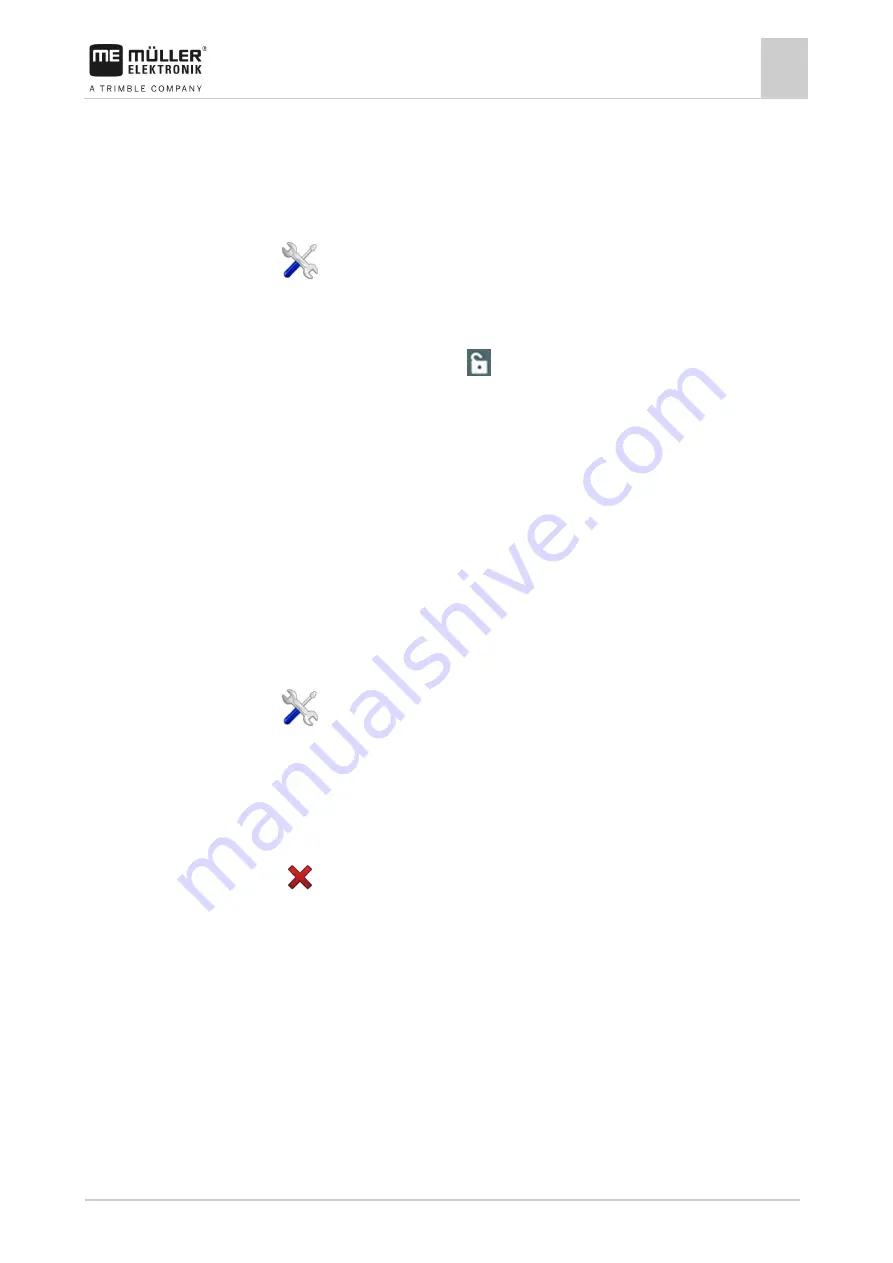
Configuring the terminal in the Service application
Creating screenshots
7
30322538-02-EN
V9.20191001
49
Creating screenshots
A screenshot is a photo of the screen being displayed.
1.
Insert a USB memory device into the terminal.
2.
- Open the “Service” application.
3.
Tap “Terminal”.
4.
Set the “Screenshot” parameter to “Activated”.
5.
To create a screenshot, press the
button.
⇨
The content of the terminal screen will be saved as an image file on the USB memory
device in the “Screencopy” folder.
Deleting pools
Pools are the intermediate storage for the terminal. Pools are used to temporarily store graphics or
text. Over time, the pools will become too large and slow down the operation of the terminal.
You can delete the pools to speed up the terminal's operation.
Delete the pools:
▪
After updating the software of a connected job computer.
▪
If the terminal operates more slowly than usual.
▪
When asked to do so by Customer Services.
To delete the pools:
1.
- Open the “Service” application.
2.
Tap “Object pool”.
⇨
A list with the ISO names of ISOBUS job computers appears, whose graphics and text can
be found in the storage of the terminal. You can determine from the icon which farm
implement is being controlled by the job computer.
3.
Tap the object pool which you want to delete.
4.
- Delete the object pool.
⇨
Nothing happens if you delete the wrong object pool.
⇨
The following message appears: “Do you want to delete the folder?”
5.
To confirm, tap “Yes”.
6.
The current pool of the job computer will be loaded after the next restart.
Using the Open Data Interface
Müller-Elektronik Open Data Interface (short: ME ODI or ODI) is a driver that activates an interface to
Internet services.
Through this interface, data can be exchanged between the terminal applications and external
Internet-based services.
7.5
Procedure
7.6
When to delete?
Procedure
7.7






























